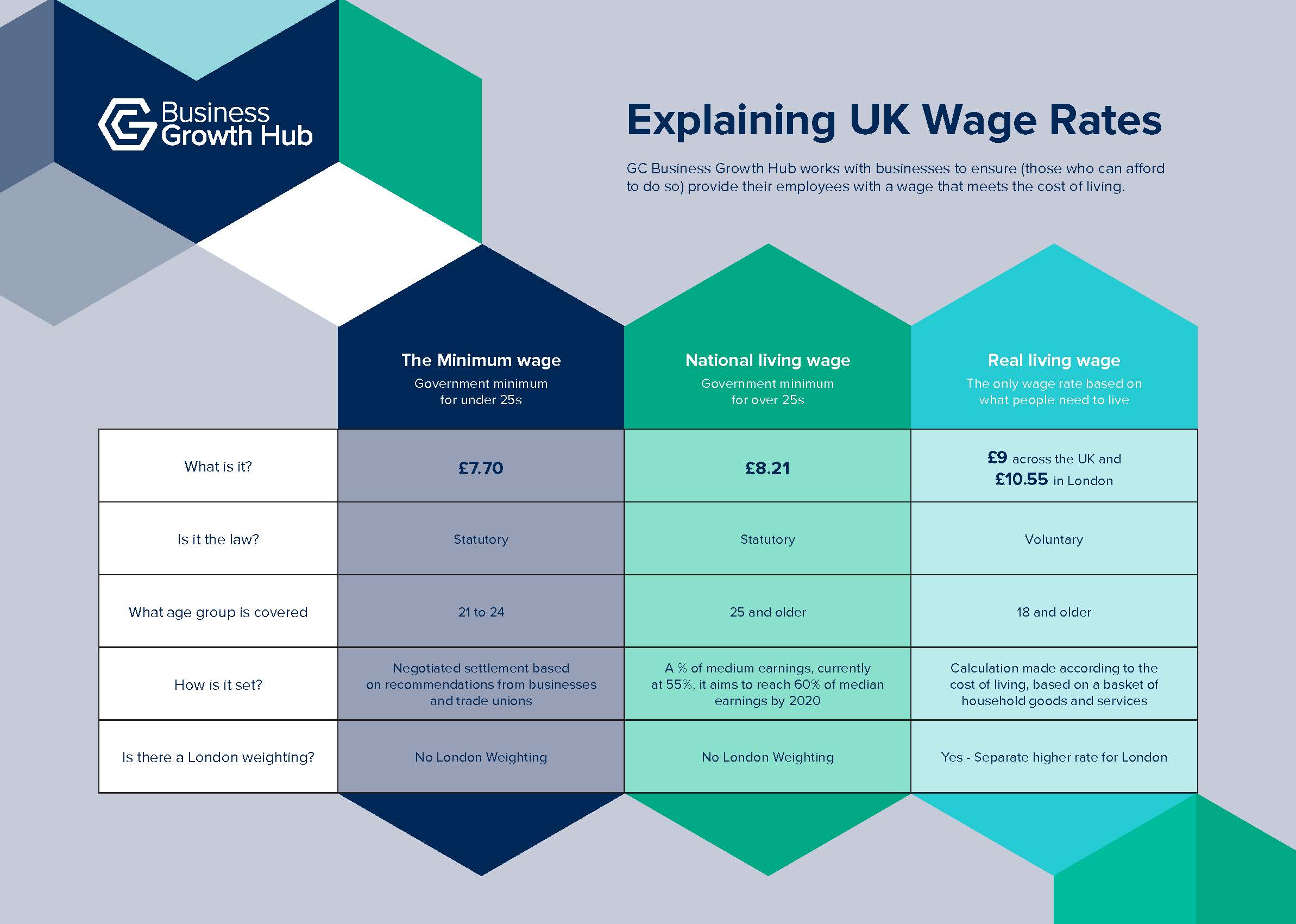Real Living Wage – better for business
5 November 2018
Matt Richardson, Leadership and Workforce Development Advisor at GC Business Growth Hub explains the Real Living Wage that comes into effect next year, and what impact it has for your business.
As confirmed in the Chancellor’s Budget last week (29th October), the National Living Wage (NLW) will increase from £7.83 p/hr to £8.21 p/hr from April 2019, a rise of 4.9%. This is a statutory measure set by the Government and increases every year based on a percentage of median earnings.
This change in rate equates to roughly £690 per full-time member of staff. The Minimum Wage (MW) is a varying rate that applies to staff under the age of 25. We have a wage rate reference table below.
The table below is an indicator of both existing and future wage rates across the UK. To the left of the columns shows current minimum, living and real living wage rates, to the right of the columns is the newly announced wage increases that will come into effect from the 1st April 2019.

What route should you take as a business owner?
You may think; “If I have a choice, I will save money by paying staff the living wage rather than the real living wage” (I really hope you don’t think like this!). Perhaps the more optimistic answer that advisors may hear from businesses is “I can’t afford to pay staff the real living wage rate but would if I could”. This is where we need to talk about the significant impacts and potential long-term losses a business can face through losing staff, absenteeism or lack of productivity.
A research survey carried out by The Employee Awards in January this year discovered that 52% of employees in both public and private sectors are actively looking for a new job... that’s half of your workforce actively looking for new opportunities right now! The report highlights that a lack of person-centred approach, not showing appreciation for employee contributions, drives staff to look elsewhere. Recognition gives everyone a boost: this may be simply providing positive feedback on a piece of work a member of staff has completed; or just acknowledging their existence in a busy office. Imagine what kind of impact you would be making if you paid that voluntary extra to their salary?
The benefits of moving staff from the NLW to the RLW are bigger than pounds and pence. I’d also advise to look at the rate increase without your finance hat on, looking instead at the internal impact this change can have on your staff’s well-being and sense of worth within your organisation. You want to create an environment to get the very best from your staff and the first step of that is building a safety net for them through their salary. The security of regular work and salary can support sustained positive health and the desire for staff to reciprocate that investment through their own personal investment into the business with increased productivity, feeling fully integrated in the machine. Now of course, this is not always the case and increase in salary does not automatically equate to increase in productivity but is certainly one part of the ever-evolving staff engagement puzzle.
How did your staff get into work today? Do they ever go out for their lunch? Do your staff go for after-work drinks? What are their living situations? In the larger organisations this may be more difficult to know but with a high percentage of SMEs being lower than 10 members of staff, I'd imagine you as a business owner would know a lot of this information. The questions are only a few small observations but can be food for thought on some of the wider impacts a wage rate increase can have on a member of staff. Again, please take this with a pinch of salt but what I want to stress is the positive implications on the workforce that wage rate increase can make and thinking strategically long term in relation to how your business and your workforce will move forward, you need your team onside.
The answers we could now receive may be “I know I don’t have to pay it, but I’ve found that its helped with…”